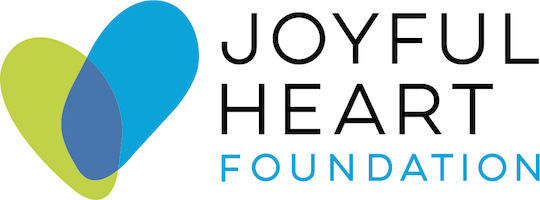You can leave this site quickly.
Learn more about Internet safety.
Creative Expression

Many of us remember making art as small children. Carving out that piece of floor or kitchen table or classroom and losing ourselves as we became engrossed in the task at hand. Immersed in a sea of paints, crayons, construction paper, brown paper bags and Popsicle sticks, all our senses were engaged. The smell of the crayons, the feel of wet paint or glitter glue on fingers, the sound of furious coloring or of our own rhythmic breathing as we focused on a task all grounded us to our mission. Some will remember the sense of pride and accomplishment at having completed this act of telling a story. Telling our story in a way that makes sense of ourselves, our families and our world.
Later, as teenagers, we may have had a similar experience. Our newly heavy limbs sprawled out as we wrote poetry or song lyrics, drew cartoons or just expressed our thoughts in notebooks or journals. We were still connected to that drive to communicate our inner selves to the world. That communication has intrinsic value. It connects us to others, to a community. It allows us to have agency in that community by sharing a story and making ourselves visible.
What Is Creative Expression?
"Joy’s soul lies in the doing." —Shakespeare
There is an ongoing theme in our work at Joyful Heart. That theme is that all of us have the knowledge inside ourselves about what we need to heal and find our joy. Creative expression can help connect people, at all stages of life or their recovery from trauma, to that inner healing voice.
There are many routes to self-expression. Creativity can be explored through a variety of artistic disciplines. Commonly identified methods include drama, dance, music, creative writing and the visual arts, including photography. All these activities engage the participant/artist in a process that uses a holistic health framework to access physical, mental, spiritual and social well-being. The benefits of creative expression do not end at any particular age, but many people are not given the opportunity to be artistic as they move into adulthood. Children, youth, adults and the elderly can all participate in creative or artistic expression. It can be utilized to express thoughts and feelings that are too big or too difficult to put into words. This can be especially helpful with people who have linguistic or cognitive issues that make creating a written or spoken narrative daunting.
One of the most engaging features of the creative process is that it facilitates moments of vitality and connection for those who choose to participate in it. Sir Ken Robinson, an internationally recognized leader in the development of creativity, innovation and human resources, describes the experience: “The arts address the idea of an aesthetic experience. An aesthetic experience is one in which the senses are operating at their peak, when you are present in the current moment, when you are resonating with the excitement of this thing that you are experiencing, when you are fully alive.” This experience is part of the enchantment that creative expression holds, the process connects us to our authentic self. Art can be the expression of our most inner selves, even of our souls.
Creative expression can lead us to a deeper level of understanding and self-discovery. Cathy Salser, the Founder and Executive Director of A Window Between Worlds, an agency that was born from her vision to “share art in a way that makes a difference,” describes creative expression as “the language that lives in the heart and the spirit. It’s the language that emerges when you find the safety to really listen to your heart.”




Your Voices